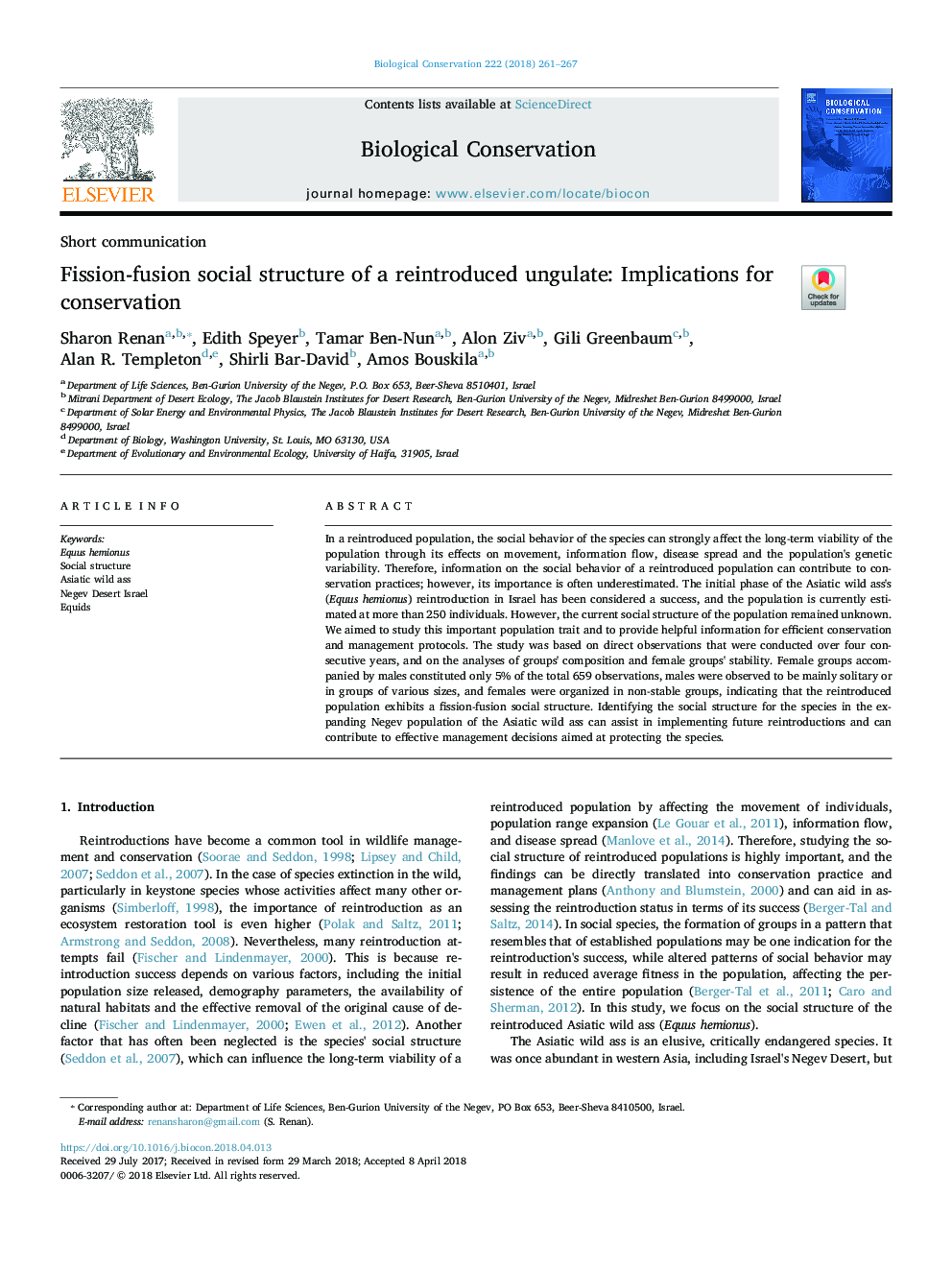| Article ID | Journal | Published Year | Pages | File Type |
|---|---|---|---|---|
| 8847285 | Biological Conservation | 2018 | 7 Pages |
Abstract
In a reintroduced population, the social behavior of the species can strongly affect the long-term viability of the population through its effects on movement, information flow, disease spread and the population's genetic variability. Therefore, information on the social behavior of a reintroduced population can contribute to conservation practices; however, its importance is often underestimated. The initial phase of the Asiatic wild ass's (Equus hemionus) reintroduction in Israel has been considered a success, and the population is currently estimated at more than 250 individuals. However, the current social structure of the population remained unknown. We aimed to study this important population trait and to provide helpful information for efficient conservation and management protocols. The study was based on direct observations that were conducted over four consecutive years, and on the analyses of groups' composition and female groups' stability. Female groups accompanied by males constituted only 5% of the total 659 observations, males were observed to be mainly solitary or in groups of various sizes, and females were organized in non-stable groups, indicating that the reintroduced population exhibits a fission-fusion social structure. Identifying the social structure for the species in the expanding Negev population of the Asiatic wild ass can assist in implementing future reintroductions and can contribute to effective management decisions aimed at protecting the species.
Keywords
Related Topics
Life Sciences
Agricultural and Biological Sciences
Ecology, Evolution, Behavior and Systematics
Authors
Sharon Renan, Edith Speyer, Tamar Ben-Nun, Alon Ziv, Gili Greenbaum, Alan R. Templeton, Shirli Bar-David, Amos Bouskila,
